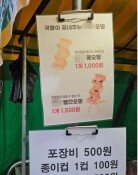Restructuring Fails to Achieve Goals
Restructuring Fails to Achieve Goals
Posted November. 15, 2007 03:58,
When the financial crisis hit Koreas economy in late 1997, the Korean government came up with a major restructuring program involving a four-sector financial market, corporations, labor, and public sectors.
Thanks to corporations painstaking streamlining and citizens participation in belt-tightening efforts, Korea was able to escape the International Monetary Fund (IMF) in August 2001. However, the nations economy had to go through a great deal of trial and error, as seen in the case of the sale of Korea First Bank. As side-effects of the financial crisis, such trial and error has burdened the economy enormously.
Eight percentage point-BIS ratio remains controversial -
When the financial market failed to function properly due to insolvent operation and a credit crunch, the Kim Dae-jung administration sought intensive restructuring efforts. Its goal was to establish an efficient financial system.
As a result of the restructuring, the number of domestic financial institutes was reduced to 1,304 by last June, from 2,103 at the end of 1997. This means that a third of all financial firms have disappeared within a decade.
The downsizing efforts of financial institutions were rigid and greatly restrictive. Banks were forced to meet the BIS capital adequacy ratio of eight percent. If they failed to do so, they had to be liquidated or merged with other banks.
Consequently, the BIS ratio of domestic commercial banks improved significantly to 12.31 percent, from 7.04 percent in 1997, and the ratio of insolvent bonds was also decreased by a large margin to 0.84 percent from 6.70 percent.
However, controversy remains over whether the BIS ratio was too rigidly implemented at the time of the financial liquidity crisis.
A researcher at a private economic think tank said, The most questionable aspect is why the BIS ratio served as the sole indicator of the restructuring, given that there were many other criteria for judgment such as potential growth rate and liquidity ratio of financial banks.
One of the major mistakes in the course of downsizing was to hand over the initiative of the domestic banking industry as the government emphasized the domestic banks meeting of international standards.
In addition to Korea First Bank, other cases involving Hanmi Bank, which was sold to the Carlyle Group (and later merged with Citigroup) and Korea Foreign Exchange Bank, which was purchased by Lone Star Funds, raised controversy over the outflow of the nations wealth.
Corporate management was enhanced, dynamism was lost-
Business practices based on excessive borrowing of foreign capital and extended business lines were the basic principals causing the string of bankruptcies among Korean corporations. In early 1998, in an effort to break away from old business practices, the government declared the end of tendency towards over-expansion of large conglomerates. These efforts prompted large companies to take the Big Deal, in which companies were forced to sell redundant businesses or merge with other companies.
The following year, the government demanded the improvement of corporations management structure, such as the separation of industrial and financial capital, restriction of cross investment and insider trading, and eradication of illegal inheritance.
Corporations achieved great improvement in terms of profits and health of management through the restructuring programs, taking bold measures to close insolvent assets and businesses and carefully choose and develop major businesses.
There are positive assessments in corporate management, as the number of companies that converted their management structure to holding companies reached 40 as of the end of August.
Yet, there was some policy confusion in the restructuring process. A case in point is the revival of the investment cap in April, 2001, after the program was abolished under the pretext of corporate reform at the end of 1999. Although the government insists on the system in order to enhance corporate management, many experts point out that the system as a major stumbling block for business diversification and investment.
Some raised their voices against the governments over-emphasizing foreign investment attraction which they believe caused reverse discrimination against domestic companies. According to the Samsung Economic Research Institute, 13, or 65 percent, of the 20 companies with 1 trillion won in revenues as of the end of 2005 were founded to hold domestic capital but were later sold to foreign companies after the foreign currency crisis.
Ongoing reform-
The public funds injected by the government between November 1997 and September this year amount to 168.4 trillion won. However, the revulsion of capital fell short of its target goals with 89.1 trillion won (52.9 percent), which means the wounds of the foreign crisis run deep and wide.
In particular, the governments four major reform sectors, with the exception of the financial market and corporations, continues to progress at snail pace, inviting much criticism of Retrogression rather than reformation. Heo Chan-guk, director of the Korea Economic Research Institute, stressed, There are no signs of progress in the public and labor sectors. Instead, some have in effect retrogressed to the past. We have no time to lose in the restructuring the two sectors.
Hwang In-seong, a lead researcher at the SERI said in its report: The assessment and tasks of the foreign crisis over a decade, the labor sectors flexibility remains unchanged from prior to the foreign crisis, and the dynamics of the labor market have been reduced as it failed to create many new jobs. We have to establish reasonable labor-management relationships, and at the same time, strengthen the flexibility of the labor sector.
cha@donga.com
Headline News
- Joint investigation headquarters asks Yoon to appear at the investigation office
- KDIC colonel: Cable ties and hoods to control NEC staff were prepared
- Results of real estate development diverged by accessibility to Gangnam
- New budget proposal reflecting Trump’s demand rejected
- Son Heung-min scores winning corner kick







